Watch All these videos! Bill Nye
What do you think?
Before you read, decide if you agree or disagree with each of these statements. As you read this lesson, see if you change your mind about any of the statements.
1. An ecosystem never changes.
2. Nothing grows in the area where a volcano has erupted.
This object was once part of a mining system used to move copper and iron ore. Today, so many forest plants have grown around it that it is barely recognizable. How do you think this happened? What do you think this object will look like after 500 more years?
1
An ecosystem can change over time. Change usually happens so gradually that you might not notice differences from day to day.
1. Above are two pictures of ecosystem communities. One is labeled A and the other is labeled B.
2. Imagine community A changed and became like community B. On a blank piece of paper, draw
what you think community A might look like midway in its change to becoming like community
B.
what you think community A might look like midway in its change to becoming like community
B.
Think About This
1.What changes did you imagine? How long do you think it would take for community A to become
like community B?
like community B?
2. Key Concept Summarize the changes you think would happen as the community changed from A
to B.
to B.
Have you ever seen weeds growing up through cracks in a concrete sidewalk? If they were not removed, the weeds would keep growing. The crack would widen, making room for more weeds. Over time, the sidewalk would break apart. Shrubs and vines would move in. Their leaves and branches would grow large enough to cover the concrete. Eventually, trees could start growing there.
This process is an example of ecological succession—the process of one ecological community gradually changing into another. Ecological succession occurs in a series of steps. These steps can usually be predicted. For example, small plants usually grow first. Larger plants, such as trees, usually grow last.
The final stage of ecological succession in a land ecosystem is a climax community—a stable community that no longer goes through major ecological changes. Climax communities differ depending on the type of biome they are in. In a tropical forest biome, a climax community would be a mature tropical forest. In a grassland biome, a climax community would be a mature grassland.
Climax communities are usually stable over hundreds of years. As plants in a climax community die, new plants of the same species grow and take their places. The community will continue to contain the same kinds of plants as long as the climate remains the same.
1. Key Concept Check What is a climax community?
Primary Succession
What do you think happens to a lava-filled landscape when a volcanic eruption is over? As shown in Figure 1, volcanic lava eventually becomes new soil that supports plant growth. Ecological succession in new areas of land with little or no soil, such as on a lava flow, a sand dune, or exposed rock, is primary succession. The first species that colonize new or undisturbed land are pioneer species. The lichens and mosses in Figure 1 are pioneer species.
Secondary Succession
In areas where existing ecosystems have been disturbed or destroyed, secondary succession can occur. One example is forestland in New England that early colonists cleared hundreds of years ago. Some of the cleared land was not planted with crops. This land gradually grew back to a climax forest community of beech and maple trees, as illustrated in Figure 2.
2.  Reading Check Where does secondary succession occur?
Reading Check Where does secondary succession occur?
 Reading Check Where does secondary succession occur?
Reading Check Where does secondary succession occur?
REVIEW VOCABULARY
community - all the organisms that live in one area at the same time
SCIENCE USE V. COMMON USE
pioneer
Science Use the first species that colonize new or undisturbed land
Science Use the first species that colonize new or undisturbed land
Common Use the first human settlers in an area
Like land ecosystems, freshwater ecosystems change over time in a natural, predictable process. This process is called aquatic succession.
Aquatic Succession
Aquatic succession is illustrated in Figure 3. Sediments carried by rainwater and streams accumulate on the bottoms of ponds, lakes, and wetlands. The decomposed remains of dead organisms add to the buildup of soil. As time passes, more and more soil accumulates. Eventually, so much soil has collected that the water disappears and the area becomes land.
1. Key Concept Check What happens to a pond, a lake, or a wetland over time?
Figure 3 The water in a pond is slowly replaced by soil. Eventually, land plants take over and the pond disappears.
Eutrophication
As decaying organisms fall to the bottom of a pond, a lake, or a wetland, they add nutrients to the water. Eutrophication (yoo troh fuh KAY shun) is the process of a body of water becoming nutrient-rich.
Eutrophication is a natural part of aquatic succession. However, humans also contribute to eutrophication. The fertilizers that farmers use on crops and the waste from farm animals can be very high in nutrients. So can other forms of pollution. When fertilizers and pollution run off into a pond or lake, nutrient concentrations increase. High nutrient levels support large populations of algae and other microscopic organisms. These organisms use most of the dissolved oxygen in the water and less oxygen is available for fish and other pond or lake organisms. As a result, many of these organisms die. Their bodies decay and add to the buildup of soil, speeding up succession.
WORD ORIGIN
eutrophication
from Greek eutrophos, means “nourishing”
from Greek eutrophos, means “nourishing”
Lesson Review
Visual Summary
Ecosystems change in predictable ways through ecological succession.
The final stage of ecological succession in a land ecosystem is a climax community.
The final stage of aquatic succession is a land ecosystem.
What do you think NOW?
You first read the statements below at the beginning of the lesson.
1. An ecosystem never changes.
2. Nothing grows in the area where a volcano has erupted.
Did you change your mind about whether you agree or disagree with the statements? Rewrite any false statements to make them true.
Lesson Assessment
Use Vocabulary
1. Define pioneer species in your own words.
2. The process of one ecological community changing into another is __________.
3. Compare and contrast succession and eutrophication in freshwater ecosystems.
Understand Key Concepts4. Draw a picture of what your school might look like in 500 years if it were abandoned.
5. Which process occurs after a forest fire?
A.eutrophication
B.photosynthesis
C.primary succession
D.secondary succession
6. Which organism below would be the first to settle an area that has been buried in lava?
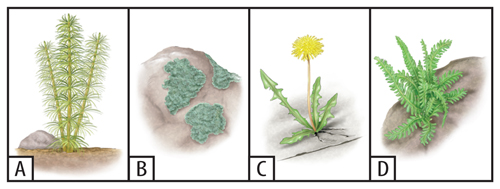

A.A
B. B
C.C
D.D
7. What is a forest called that has had the same species of trees for 200 years?
A.climax community
B.pioneer species
C.primary succession
D.secondary succession
8. What is eutrophication?
A.decreasing nutrients
B.decreasing salinity
C.increasing nutrients
D.increasing salinity
Interpret Graphics
9. Determine What kind of succession— primary or secondary—might occur in the environment
pictured? Explain.
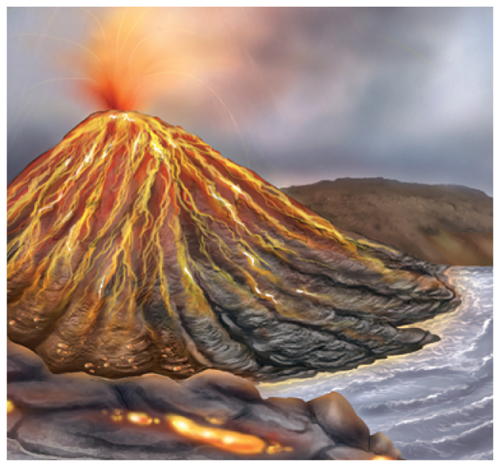
pictured? Explain.

10. Summarize Information Copy the graphic organizer below and fill it with the types of
succession an ecosystem can go through.

Critical Thinking
11. Reflect What kinds of abiotic factors might cause a grassland climax community to slowly
become a forest?
become a forest?
12. Hypothesize Why are the first plants that appear in primary succession small?
Writing in Science
13. Write a paragraph explaining the succession process that might occur in a microhabitat, such as a
garden with weeds. Include a main idea, supporting details, and concluding sentence.
garden with weeds. Include a main idea, supporting details, and concluding sentence.
Science is Awesome!
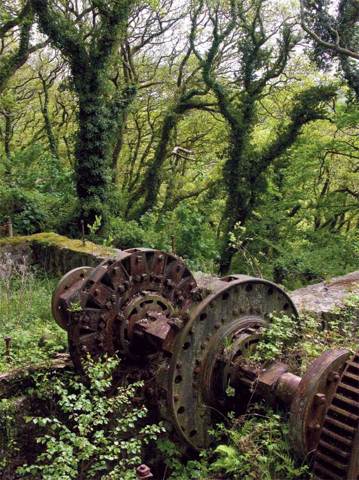


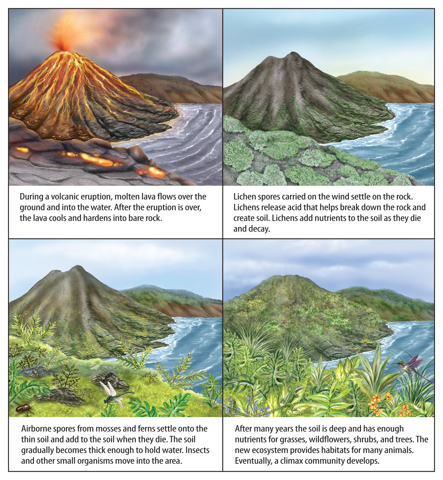
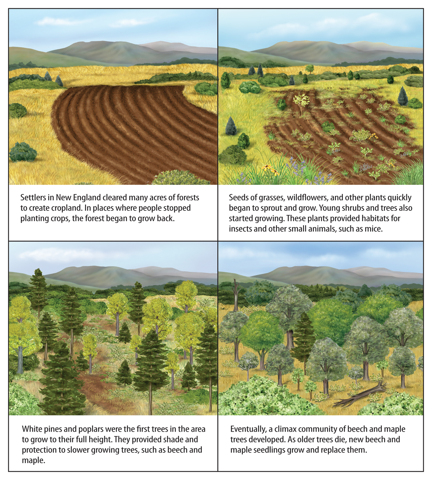
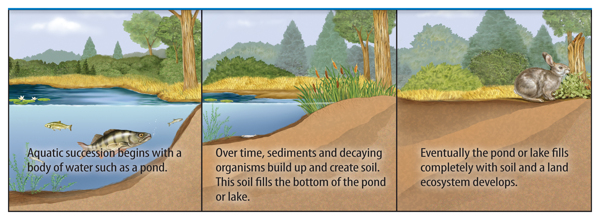
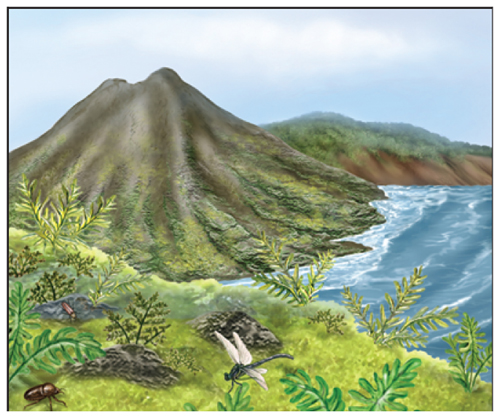
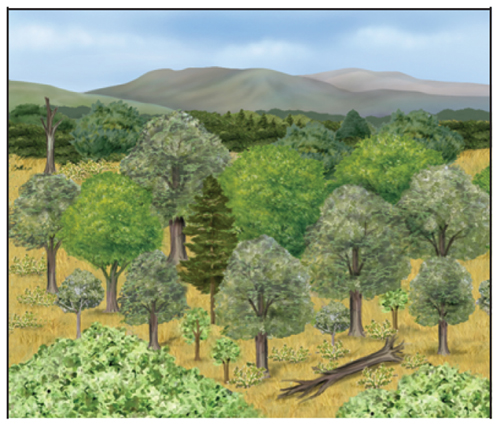
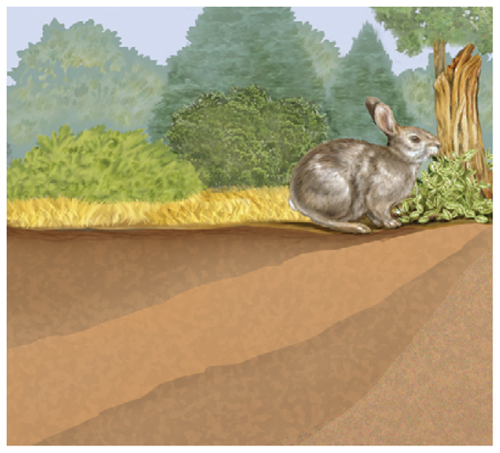
0 comments:
Post a Comment